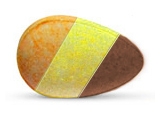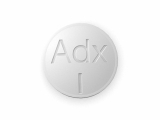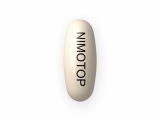Is erectile dysfunction common in older men
Erectile dysfunction (ED) is a common condition that affects men of all ages, but it is more prevalent in older men. ED refers to the inability to get or maintain an erection during sexual activity. This condition can have a significant impact on a man's quality of life and can cause stress, anxiety, and depression.
As men age, they may experience physical changes that can contribute to ED. For example, blood vessels can become less elastic, reducing blood flow to the penis. Hormonal changes can also occur, which can affect sexual desire and function. Additionally, conditions such as diabetes, high blood pressure, and heart disease can increase the risk of ED.
Despite its prevalence, many older men may feel embarrassed or ashamed to discuss ED with their healthcare providers. However, it is important to seek medical advice if you experience symptoms of ED, as this can be a sign of an underlying condition that needs to be treated. There are many treatment options available, including medications, lifestyle changes, and counseling.
It is important for older men to understand that ED is a common and treatable condition. Seeking medical advice and discussing treatment options with your healthcare provider can help improve sexual function and overall quality of life.
Erectile Dysfunction: What is it?
Definition
Erectile dysfunction (ED), also known as impotence, is the inability to achieve or maintain an erection during sexual activity. It can occur at any age, but it is more common in older men.
Causes
ED can be caused by physical or psychological factors. Physical causes include medical conditions, such as diabetes, hypertension, and heart disease, as well as medication side effects. Psychological causes include stress, anxiety, and depression.
Symptoms
The main symptom of ED is the inability to achieve or maintain an erection. Other symptoms may include reduced sexual desire and difficulty with ejaculation or orgasm.
Treatment
Treatment for ED depends on the underlying cause. Lifestyle changes, such as exercising regularly and eating a healthy diet, may help improve symptoms. Medications, such as sildenafil (Viagra) and tadalafil (Cialis), are also available to help with ED. In some cases, surgery may be necessary.
Prevention
Preventing ED involves maintaining a healthy lifestyle, managing underlying medical conditions, and avoiding risk factors such as smoking and excessive alcohol consumption. Regular check-ups with a healthcare provider can also help identify and treat any potential issues before they become a problem.
Conclusion
Erectile dysfunction is a common condition that can affect men of any age, but it is more common in older men. It can have physical or psychological causes and can be treated with lifestyle changes, medication, or surgery. Prevention involves maintaining a healthy lifestyle and seeking regular medical care.
Prevalence of Erectile Dysfunction in Older Men
Introduction
Erectile dysfunction (ED) is a common condition affecting men of all ages. However, as men age, the prevalence of ED increases. ED is defined as the inability to achieve and maintain an erection sufficient for sexual activity. In this article, we will explore the prevalence of ED in older men.
Prevalence of ED
The prevalence of ED in older men varies depending on the study. One study found that the prevalence of ED in men aged 40-70 years was 52%. Another study found that the prevalence of ED in men aged 70 years and older was 70%. Additionally, men with chronic health conditions such as diabetes and hypertension are more likely to experience ED.
Factors Contributing to ED in Older Men
There are various factors that contribute to the development of ED in older men. These factors include age-related decline in testosterone levels, medical conditions such as diabetes and cardiovascular disease, smoking, and psychological factors such as anxiety and depression. Lifestyle modifications, such as exercise and healthy eating, can help improve ED symptoms in older men.
Conclusion
ED is a common condition that affects older men. The prevalence of ED increases with age and is more common in men with chronic health conditions. However, lifestyle modifications and proper medical care can help improve ED symptoms in older men. It is important for older men to speak with their healthcare provider about any concerns they may have regarding ED.
Causes of Erectile Dysfunction in Older Men
1. Physical Causes
Physical causes of erectile dysfunction in older men can be attributed to factors such as aging, poor blood circulation, nerve damage, and hormonal imbalances. These factors can cause low libido, weak erections, and difficulty in achieving an orgasm.
- Age-related changes in the body: As men age, their testosterone levels start to decrease, resulting in decreased libido and weaker erections.
- Poor blood circulation: Narrowed blood vessels or the buildup of plaque in arteries can reduce the amount of blood flow to the penis, making it difficult to achieve and maintain an erection.
- Nerve damage: Conditions like multiple sclerosis, Parkinson's, and stroke can cause nerve damage, leading to difficulty in achieving an erection.
- Hormonal imbalances: The imbalance of hormones like testosterone, estrogen, and thyroid can cause erectile dysfunction in older men.
2. Psychological Causes
In some cases, erectile dysfunction in older men can be attributed to psychological factors such as depression, anxiety, and stress. These factors can negatively impact a man's sex drive and lead to difficulty in achieving an erection.
- Depression: Feelings of hopelessness, worthlessness and loss of interest in activities can affect a man's ability to achieve and maintain an erection.
- Anxiety: Performance anxiety, fear of not being able to perform sexually, or fear of intimacy, can lead to erectile dysfunction.
- Stress: High levels of stress can lead to physical and psychological issues that can interfere with a man's sexual performance.
3. Lifestyle Factors
Lifestyle factors like smoking, alcohol consumption, and poor diet can also play a role in erectile dysfunction in older men. These factors can negatively impact blood flow, hormone levels, and overall health.
- Smoking: Smoking can damage blood vessels and narrow them, reducing blood circulation to the penis, leading to erectile dysfunction.
- Alcohol consumption: Heavy drinking has been linked to erectile dysfunction, as it can affect testosterone levels and blood flow.
- Poor diet: A diet high in saturated fats, sugar, and processed foods can contribute to weight gain, high blood pressure, and type 2 diabetes, which are all risk factors for erectile dysfunction in older men.
4. Medications
Certain medications prescribed for other health conditions can also cause erectile dysfunction in older men. These medications include antidepressants, blood pressure medications, and drugs used to treat prostate cancer.
- Antidepressants: These medications can reduce libido, affect hormone levels, and cause difficulty in achieving an erection.
- Blood pressure medications: Medications used to treat high blood pressure can affect blood flow to the penis, leading to erectile dysfunction.
- Drugs used to treat prostate cancer: These medications can interfere with testosterone production and cause erectile dysfunction.
Treatment Options for Erectile Dysfunction in Older Men
1. Lifestyle Changes
For some older men with mild cases of erectile dysfunction, a simple change in lifestyle habits can make a difference. This can include quitting smoking, reducing alcohol consumption, exercising regularly, and maintaining a healthy weight. These changes can improve blood flow to the penis and reduce the risk of developing or worsening ED.
2. Oral Medications
Oral medications, such as sildenafil (Viagra), tadafil (Cialis), and vardenafil (Levitra), are commonly prescribed treatments for ED. These medications work by relaxing the blood vessels in the penis, which increases blood flow and allows for an erection. However, they may not work for everyone and can have side effects such as headaches, flushing, and upset stomach.
3. Vacuum Devices
A vacuum device, also known as a penis pump, is a noninvasive treatment option for ED. The device consists of a cylinder that is placed over the penis. The air is pumped out of the cylinder, creating a vacuum that pulls blood into the penis and causes an erection. The erection is maintained with a constriction ring that is placed at the base of the penis.
4. Injections
Injections of medications such as alprostadil (Caverject) and phentolamine (Regitine) can be directly injected into the penis to produce an erection. These injections work by relaxing the smooth muscle in the penis and increasing blood flow. This treatment option may be less convenient than other options and may cause side effects such as pain or bruising at the injection site.
5. Surgical Treatment
In some cases, surgical treatment may be an option for older men with severe cases of ED. Penile implant surgery involves the insertion of a prosthetic device into the penis that can be inflated to produce an erection. This procedure is generally reserved for men who have not responded to other treatment options.
It is important for older men experiencing erectile dysfunction to speak with their healthcare provider to determine the best treatment option for their individual situation.
Prevention of Erectile Dysfunction in Older Men
Healthy Habits
Erectile dysfunction can be prevented or delayed by adopting healthy habits. It is essential for men to engage in regular physical activity, eat a balanced diet and maintain a healthy weight. Avoid smoking and excessive alcohol consumption to keep ED at bay.
Combatting Chronic Diseases
Chronic diseases such as diabetes and hypertension are common causes of ED in older men. If you are at risk of developing these diseases, it is important to take steps to prevent them. Regular check-ups, a healthy diet, and exercise can help treat and prevent chronic diseases, which in turn can improve sexual function.
Medications and Supplements
Certain medications can cause ED as a side effect. If you are experiencing ED, talk to your doctor about switching to an alternate medication. Additionally, some supplements such as L-arginine or ginseng may improve ED symptoms. However, it is important to consult a healthcare professional before taking any supplements.
Psychological Health
Sexual function is connected to psychological health. Anxiety, stress and depression can all contribute to ED. Seeking professional help for mental health concerns and engaging in stress-reducing activities such as yoga or meditation, can improve sexual function and overall quality of life.
Regular Check-Ups
Regular check-ups with a healthcare provider can help identify and treat underlying medical conditions that can contribute to ED. Routine screening for conditions such as hypertension and diabetes is crucial to maintaining optimal health and sexual function.
Conclusion
While ED is a common issue in older men, it is a treatable condition that can be prevented by adopting healthy habits, treating underlying medical conditions, and seeking professional help for mental health concerns. Regular check-ups with a healthcare provider are also essential in maintaining sexual function and overall health.
Follow us on Twitter @Pharmaceuticals #Pharmacy
Subscribe on YouTube @PharmaceuticalsYouTube





Be the first to comment on "Is erectile dysfunction common in older men"